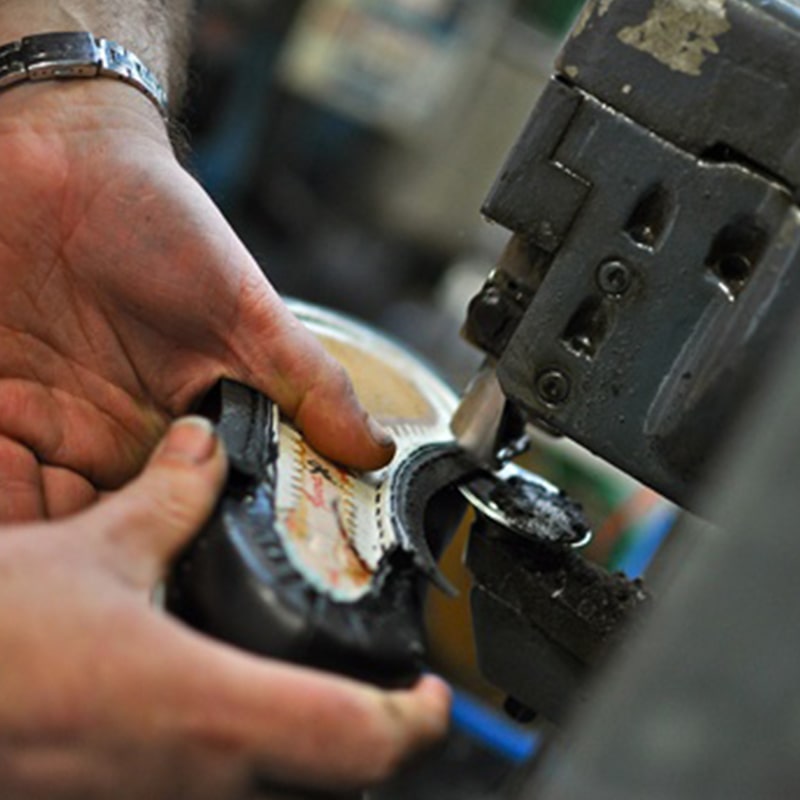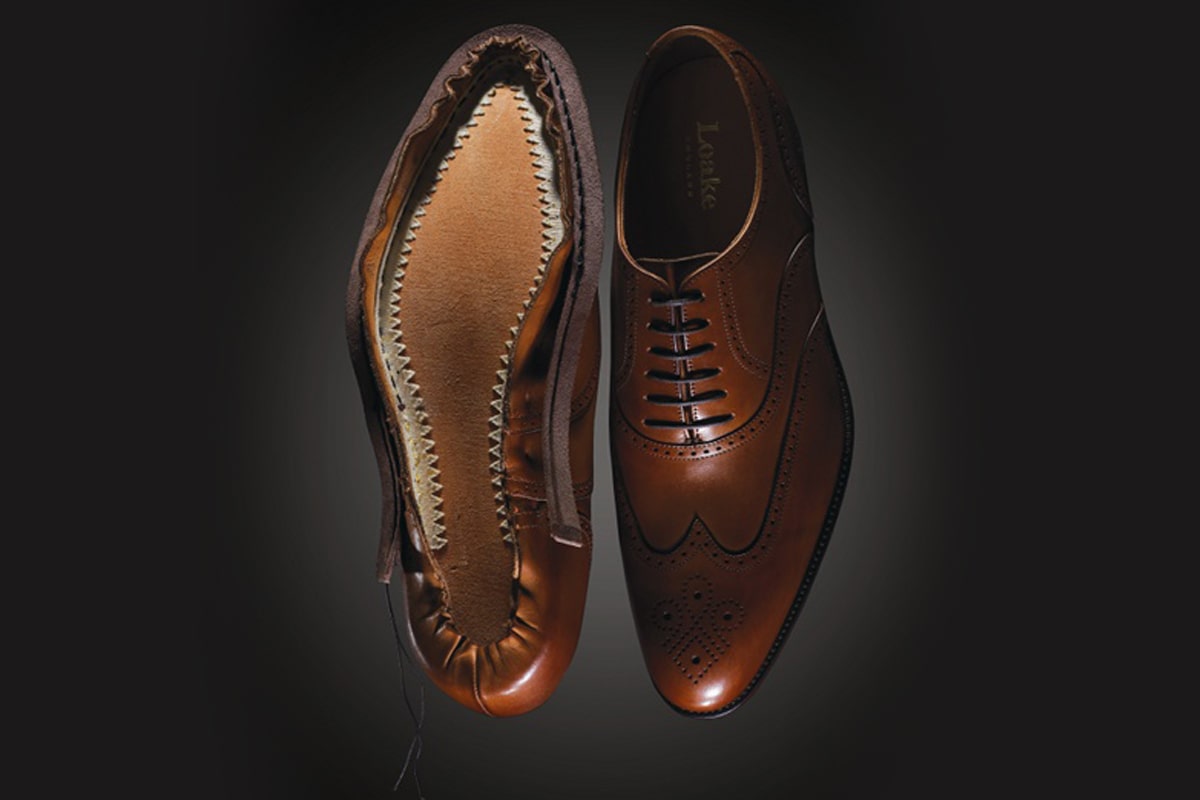Goodyear Welting Explained
Perhaps surprisingly, the Goodyear Welt has nothing to do with car tyres – it’s a particular type of shoe construction, in which Loake has specialised for over 140 years.
What is Goodyear Welt Construction and what are the benefits?
The “welt” is a strip of leather which is sewn around the bottom edge of a shoe. This stitching (the welt seam) attaches the welt to both the insole and the upper of the shoe. The welt is folded out to form a point of attachment for the outer sole. The outer sole (two layers can be used in heavier shoes) is sewn to the welt, with a heavy-duty lock-stitch seam.
Crucially, this stitching runs around the outside of the sole (rather than piercing the part under the foot) to maximise the sole’s water-resistance. In contrast, the Blake construction (a widely used method for making formal shoes) involves stitching the outer sole directly to the insole, resulting in a seam that can sometimes be felt inside the shoe, and which is more likely to leak.

In Goodyear welting construction, there is a thin cavity between the insole and the outer sole. We fill this with cork, a material that is lightweight, insulating, moulds to the shape of the foot – and, most importantly, breathes.

The disadvantage of the welted construction is that it can add bulk to the shoe, as its outer edges need to be wide enough to accommodate stitches. However, there are several significant advantages, in particular: they can be repaired more easily and they are more weather-resistant. Between the Italians and the British, you can probably guess who, historically, has chosen slim soles, and who has been more concerned with dry feet.
To find out more, take a look at our video below showing a few of the processes involved, shot inside our Northamptonshire factory, and narrated by Andrew Loake.
Perhaps surprisingly, the Goodyear Welt has nothing to do with car tyres – it’s a particular type of shoe construction, in which Loake has specialised for over 140 years.
What is Goodyear Welt Construction and what are the benefits?
The “welt” is a strip of leather which is sewn around the bottom edge of a shoe. This stitching (the welt seam) attaches the welt to both the insole and the upper of the shoe. The welt is folded out to form a point of attachment for the outer sole. The outer sole (two layers can be used in heavier shoes) is sewn to the welt, with a heavy-duty lock-stitch seam.
Crucially, this stitching runs around the outside of the sole (rather than piercing the part under the foot) to maximise the sole’s water-resistance. In contrast, the Blake construction (a widely used method for making formal shoes) involves stitching the outer sole directly to the insole, resulting in a seam that can sometimes be felt inside the shoe, and which is more likely to leak.


In Goodyear welting construction, there is a thin cavity between the insole and the outer sole. We fill this with cork, a material that is lightweight, insulating, moulds to the shape of the foot – and, most importantly, breathes.
The disadvantage of the welted construction is that it can add bulk to the shoe, as its outer edges need to be wide enough to accommodate stitches. However, there are several significant advantages, in particular: they can be repaired more easily and they are more weather-resistant. Between the Italians and the British, you can probably guess who, historically, has chosen slim soles, and who has been more concerned with dry feet.
To find out more, take a look at our video below showing a few of the processes involved, shot inside our Northamptonshire factory, and narrated by Andrew Loake.




